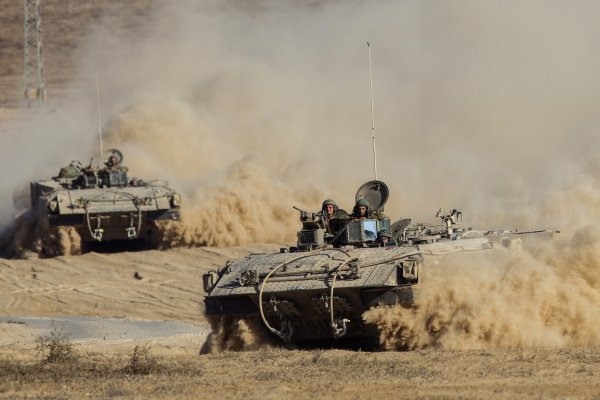This article is written by Khyati Basant, from Symbiosis Law School, Noida. This article consists of a brief description of the modes and methods of warfare under the Humanitarian Law.
Table of Contents
Introduction
International Humanitarian Law (IHL), also referred to as the rules of armed conflict is the rule controlling the conduct of war. It is a subset of international law that aims to reduce the consequences of armed conflict by defending people who are not engaged in wars and by limiting and regulating the means and methods of war available to combatants. International human rights legislation is motivated by moral values and the prevention of human suffering. It includes a set of rules, established by treaty or custom, which seeks to protect persons and property/objects that are, or maybe, affected by armed conflict and limits the rights of the conflicting parties to use their choice of methods and means of warfare.
International humanitarian law is a significant feature of the culture of international law and the rules which apply in the event of armed conflict, seeking security for individuals who are not or are no longer interested in the hostilities and restrictions on the methods and techniques used in warfare. International human rights law and international human rights law are complementary. They aim to protect the life, well-being, and integrity of individuals, from various perspectives. Humanitarian law shall apply in armed conflict situations, whilst human rights, or at least some of them, protect the human, in war and peace alike.
Purpose of the humanitarian law
International humanitarian law is designed to limit and alleviate the suffering caused by warfare. The principles derived from a precarious equilibrium between, on the one hand, the demands of warfare and, on the other, the laws of civilization. It attempts to deter armed conflict groups from wanton violence and ruthlessness and to offer vital security to those most directly affected by the war. Even now, what remained of war was a terrifying trend. War causes people needless pain, and harm to things. The Charter of the United Nations has already articulated opinions and discussed the conditions in which States can use force. IHL is concerned with the fate of those who don’t participate in the war. IHL aims to mitigate the human suffering caused by war. It primarily aims and intends to lay down rules on how war can be waged. It limits the use of weapons and guarantees proportionality in warfare.
Status of humanitarian law in India
The Indian Constitution includes no explicit clauses compelling the State to accept or enact international treaties and agreements, including the International Humanitarian Law, and the constitutional duty of the judiciary to protect basic human rights that implicitly uphold the IHL values enshrined in the Geneva Convention. Among domestic legislation, the only law which specifically covers the concepts of IHL within its framework is the 1960 (Indian) Geneva Conventions Act. However, as serious violations of the Treaties are illegal under the Act and because they are triable by ordinary criminal courts as ‘political offences,’ they can be punished by the courts-martial created under the Army Act or other relevant laws if committed by individuals liable to the latter.
Again, some of the Indian Penal Code’s crimes against persons and properties are very close to the serious violations described under the Conventions. India has other legal commitments under any of the universal agreements and treaties. The ‘Universal Declaration of Human Rights’ (UDHR) states that “every human being is born free and in dignity and rights equal. The reason and conscience endow them. They should act towards each other as a spirit of fraternity. “But later, according to Article 253 of the Indian Constitution, the Indian Government passed the Geneva Convention Act, 1960. It prescribed a penalty for breach of the 1949 convention. Red Cross misuse and other covered emblems are also forbidden under this Act.
Source of International Humanitarian Law
IHL is grounded in the traditions of ancient cultures and religions – warfare has always been subject to such practices and values. In the nineteenth century, the systematic codification of IHL began. By then, a set of concrete principles have been accepted by States, based on the harsh reality of civil war. Those laws strike a delicate balance between humanitarian interests and States’ security demands. Since the international community has developed, an increasing number of states have continued to create such laws. Today, international humanitarian law establishes a single statutory body.
The four Geneva Conventions of 1949, together with the Hague Conventions of 1907 and customary international law, are the core sources of modern international humanitarian law (IHL).
Hague Convention
The advent of codification of traditional standards of war conduct was achieved in the 19th century. IHL prescribes special rules in this Convention for the conduct of war anywhere on land, at sea, and in the air. Not only does the Hague Convention recommend laws, but it also discusses the question of which adversary should be struck. They have always ensured that innocent civilians and their properties are secured and that the injured and the prisoners are treated humanely. The Hague Convention also codified a ban on the use of arms that cause unnecessary suffering. The Conventions are the fundamental and widely agreed combat principles – the legal system that governs the means and methods of warfare. Although many of these laws, in particular by the Fourth Geneva Convention and Additional Protocols, have been revised and strengthened, they remain a central basis of international law, widely recognized as normative international law.
Geneva Convention
The circumstances of wounded soldiers at the battlefield left almost everything to be desired around the middle of the 19th century. Treatment for the sick was in all ways inadequate and incomplete. The worst of all was that the Napoleonic wars of the beginning of the century had brought to an end the customary practice of sparing the hospitals of the enemy’s field and leaving untouched both medical and wounded personnel. The Geneva First Convention (GCI) protects the wounded and sick. The Second Geneva Convention (GCII) protects the wounded, sick and shipwrecked at sea in armed conflict. The Third Geneva Convention (GCIII) provided prisoners of war with protections. The Fourth Geneva Convention (GCIV) protects civilians, including those living under occupation, in armed conflict.
Customary International Law
Customary rules play a large role in IHL’s evolution. These laws are based on the general and consistent practice of nations which gives a sense of legal duty. IHL follows the criteria of jus cogens and is also recognized as peremptory norms. They are those principles of international law that are so fundamental that no nation can ignore or act contrary to them. Customary international law is an area of international law that includes the custom principle. In addition to basic principles of law and treaties, practice is regarded among the main origins of international law by the International Court of Justice, the jurists, the United Nations, and its member states.
Means and methods of warfare under International Humanitarian Law
To offer substantive force to IHL’s basic values, various treaties and treaty provisions are banning certain types of weapons, restricting the use of certain types of weapons, or preventing or otherwise controlling other forms of military policy or actions. Such laws are usually referred to as ‘means and methods’ rules, where ‘means’ are related to all forms of firearms and firearms systems, and ‘methods’ are related to how these weapons are used, as well as ‘any practical, operational or strategic ways of conducting warfare not directly related to arms.’
International humanitarian law forbids means and methods to inflict needless harm or suffering. As a result, certain types of weapons are not allowed and there is a restriction on the way other weapons are used. Similar steps to restrict the use of certain types of weapons include the 1997 Ottawa Convention prohibiting anti-personnel explosives, the 2003 Protocol on explosive residues of war (an extension to the 1980 UN Convention on Certain Conventional Weapons), and the 2008 Dublin Treaty prohibiting cluster bombs.
Methods of warfare
Under the convention and customary IHL, a range of forms of warfare are explicitly forbidden. Some of the examples are given below:
-
Perfidy
It is defined as an act inducing the adversary’s trust to encourage him to conclude that he has the right or is obligated to offer immunity under the laws of international law applicable to military conflict, to betray that faith. “It means, for example, faking disability or sickness to strike an enemy combatant. Fighting ruses, i.e. activities aimed at misleading the enemy which do not break international law and which honour the ban of perfidy, is not forbidden. This will involve the use of masks, decoys, mock operations, and misinformation.
-
Pillage
The forcible capture of private land from the enemy’s people by an occupying or victorious force, is forbidden.
-
Starvation
It is prohibited to starve the civilian population as a method of warfare. It is also prohibited to strike, kill, delete or make useless items vital to the survival of the civilian population.
-
Quarter denial
It is forbidden to request that no quarter should be granted and thus harass an enemy or to initiate warfare on that basis. Forces of an adversary need to be given a chance to surrender and be taken, prisoner. We must respect and protect wounded soldiers.
Means of warfare
In a military conflict, the use of a single weapon may be strictly banned and the weapon itself may be deemed illegal, for example, anti-personnel bombs, cluster explosives, nuclear weapons. Additionally, its use may be limited in such circumstances e.g., the ban on the use of airborne explosive devices against a military target situated in a region where people are concentrated.
-
Nuclear weapons
- In 1996, in its advisory opinion, the International Court of Justice confirmed that IHL applied to nuclear weapons, in particular the IHL principle of distinction and the prohibition against causing unnecessary suffering. In extending these and similar laws to nuclear weapons, the court ruled that “the use or use of nuclear weapons would necessarily be contrary to the principles of international law inherent in a military war.” However, the court was unable to determine if the use of nuclear weapons would be permissible except in the exceptional circumstances of a danger to the State’s existence.
- The use of nuclear weapons is not forbidden comprehensively or uniformly. The Nuclear Non-Proliferation Treaty of 1968 aims mainly at avoiding the dissemination of nuclear weapons and at pursuing the nuclear disarmament plan. However, in an advisory opinion in 1996 the International Court of Justice stated that IHL extended to nuclear weapons, in particular the IHL definition of separation and the ban against causing undue pain. The court observed in extending these and similar laws to nuclear weapons that “the use or use of nuclear weapons will necessarily be contrary to the principles of international law inherent in armed conflicts.”
- In 2011, the Council of Members of the World Red Cross and Red Crescent Movement (consisting of the ICRC, the International Union of Red Cross and Red Crescent Societies, and all of the Regional Red Cross and Red Crescent Societies) adopted a landmark resolution, “Working for the Abolition of Nuclear Weapons,” detailing the Movement’s stance on nuclear weaponry. The resolution noted that the Council couldn’t envisage whether the use of nuclear weapons might be consistent with IHL laws, especially principles of separation, precaution and proportionality.
-
Anti-Personnel Mines
Under the Convention on the Prohibition of the Using, Stockpiling, Development and Export of Anti-Personnel Mines and on their Removal (1997), States may not use, produce, manufacture, store or move anti-personnel mines in any conditions, or enable someone else to do so. Humans must also remove all existing stocks of anti-personnel mines and the clear ground where those instruments have been laid within a specified period.
-
Chemical and biological weapons
After World War I (the 1925 Protocol for the Prohibition of the Use of Asphyxiating, Poisonous or Other Gasses and Bacteriological Methods of Warfare), the international community prohibited the use of chemical and biological weapons. This prohibition was expanded in 1972 (the Biological Weapons Convention) and 1993 (the Chemical Weapons Convention) by banning the production, storing and delivery of such weapons, in addition to their use, and by ensuring the removal of stockpiles. The Convention on Chemical Weapons also prohibits the use of riot-control agents ( e.g., tear gas) as a method of combat.
-
Cluster munitions
The Cluster Munitions Convention (2008) bans the use, manufacture, stockpiling and transition of cluster munitions (a grenade, shell, rocket or missile emitting large quantities of small explosive submunitions). In addition to these bans, States with cluster munitions are expected to remove their stockpiles of these weapons and clear polluted ground from residues of cluster munitions (unexploded cluster munitions and previous war submunitions). Similar duties also exist for supplying help to victims of cluster bombs.
-
Other weapons
The Convention on Prohibitions or Restrictions on the Use of Certain Conventional Weapons has restriction on certain weapons – Protocol I of the CCW forbids the use of any device which has the primary purpose of damaging objects which are not detected by X-rays in the human body. Protocol II prohibits or limits the use of mines (both anti-personnel and anti-vehicle), booby traps, and other similar equipment. This Protocol was revised and, in 1996, new rules were introduced. Protocol III prohibits the use of guns or explosives specifically designed to set fire to objects or to kill persons through fire or flame, such as napalm bombs and fire throwers. Protocol IV prohibits the use and transfer of Laser Weapons designed specifically for permanent blindness. Protocol V requires conflicting parties to take measures to reduce the dangers of explosive remnants of war.
Conclusion
IHL refers only to armed conflicts. This covers fighting wars both globally and domestically. IHL does not operate in cases of internal conflicts or disruptions. Internal disturbances are riots, demonstrations, and isolated, sporadic acts of violence that take place within a state territory, and in those situations, international human rights law applies. It is also important to note that the legitimacy of a military war (Jus ad Bellum) is not discussed by IHL (Jus in Bello). IHL shall treat all parties equally, irrespective of the reasons for or legality of the conflict. The principles underpin international humanitarian law are: Differentiating civilians from combatants; Prohibition of attacks on those who are not in combat; Banning the infliction of unnecessary suffering, The necessity principle; The Proportionality principle, Humanity Principle.
References
- https://blogs.icrc.org/new-delhi/2014/09/30/rules-of-war-an-introduction-to-international-humanitarian-law/
- https://www.icrc.org/en/doc/assets/files/other/what_is_ihl.pdf
- https://www.diakonia.se/en/IHL/The-Law/International-Humanitarian-Law-1/Introduction-to-IHL/Sources-of-international-law/
- https://blogs.icrc.org/ilot/2017/08/13/ihl-regulate-means-methods-warfare/
LawSikho has created a telegram group for exchanging legal knowledge, referrals and various opportunities. You can click on this link and join:












